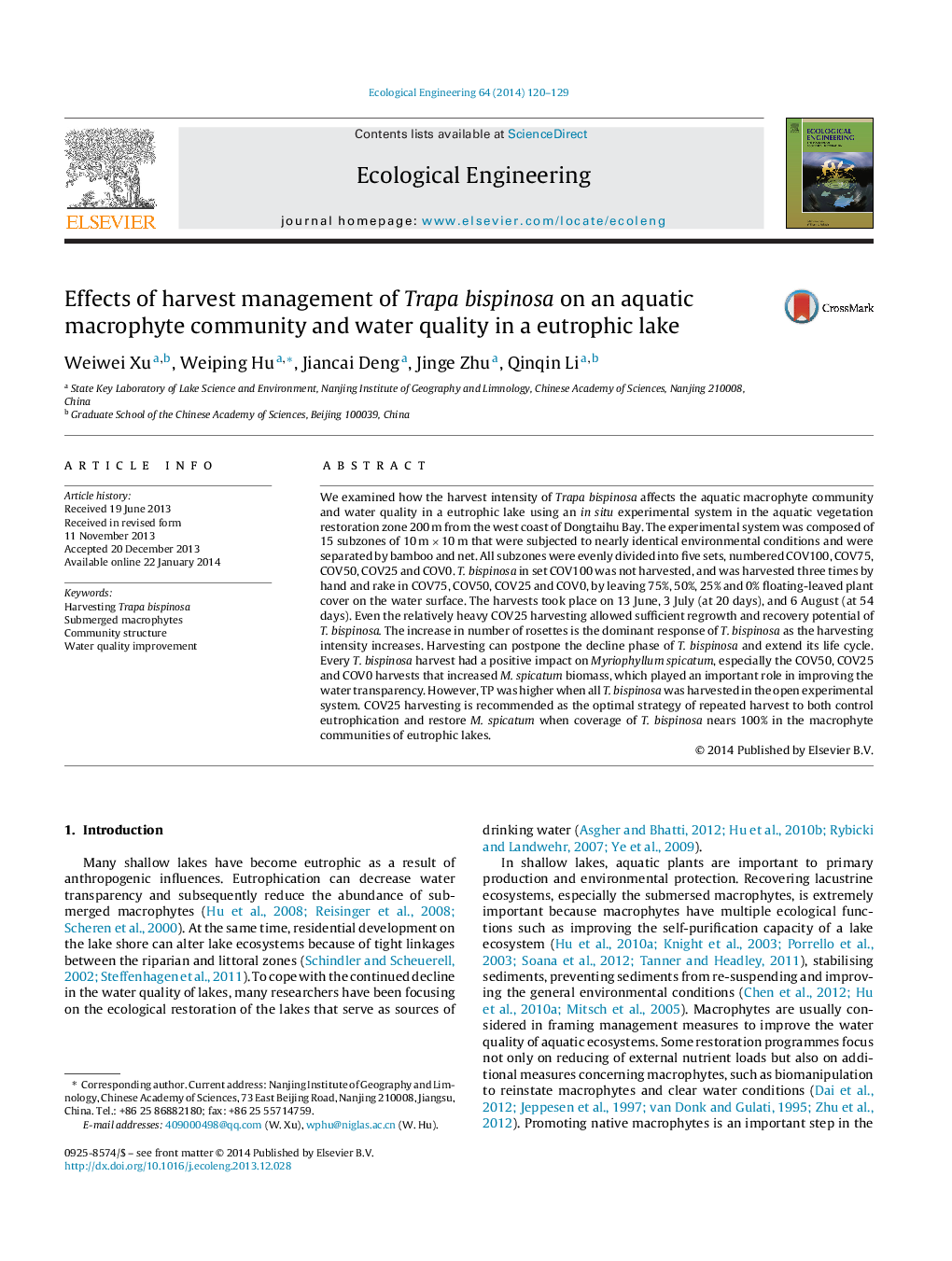| Article ID | Journal | Published Year | Pages | File Type |
|---|---|---|---|---|
| 4389570 | Ecological Engineering | 2014 | 10 Pages |
Abstract
We examined how the harvest intensity of Trapa bispinosa affects the aquatic macrophyte community and water quality in a eutrophic lake using an in situ experimental system in the aquatic vegetation restoration zone 200 m from the west coast of Dongtaihu Bay. The experimental system was composed of 15 subzones of 10 m Ã 10 m that were subjected to nearly identical environmental conditions and were separated by bamboo and net. All subzones were evenly divided into five sets, numbered COV100, COV75, COV50, COV25 and COV0. T. bispinosa in set COV100 was not harvested, and was harvested three times by hand and rake in COV75, COV50, COV25 and COV0, by leaving 75%, 50%, 25% and 0% floating-leaved plant cover on the water surface. The harvests took place on 13 June, 3 July (at 20 days), and 6 August (at 54 days). Even the relatively heavy COV25 harvesting allowed sufficient regrowth and recovery potential of T. bispinosa. The increase in number of rosettes is the dominant response of T. bispinosa as the harvesting intensity increases. Harvesting can postpone the decline phase of T. bispinosa and extend its life cycle. Every T. bispinosa harvest had a positive impact on Myriophyllum spicatum, especially the COV50, COV25 and COV0 harvests that increased M. spicatum biomass, which played an important role in improving the water transparency. However, TP was higher when all T. bispinosa was harvested in the open experimental system. COV25 harvesting is recommended as the optimal strategy of repeated harvest to both control eutrophication and restore M. spicatum when coverage of T. bispinosa nears 100% in the macrophyte communities of eutrophic lakes.
Related Topics
Life Sciences
Agricultural and Biological Sciences
Ecology, Evolution, Behavior and Systematics
Authors
Weiwei Xu, Weiping Hu, Jiancai Deng, Jinge Zhu, Qinqin Li,
